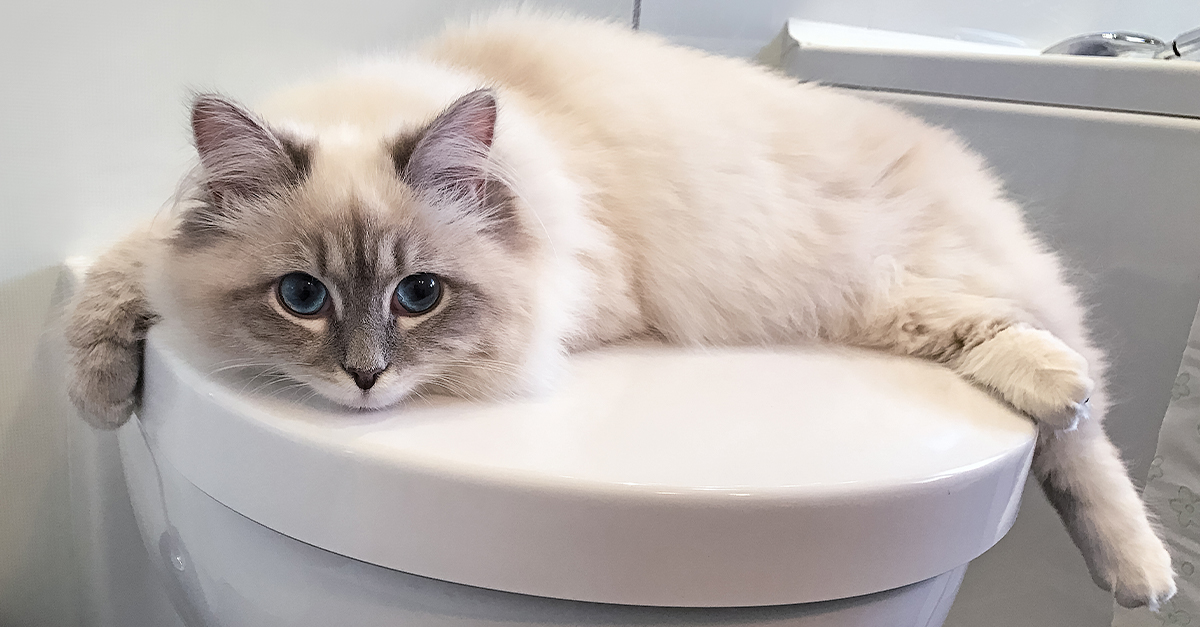Potential Risks of Flushing Cat Poop Down Your Toilet - Tips for Better Handling
Potential Risks of Flushing Cat Poop Down Your Toilet - Tips for Better Handling
Blog Article
This article in the next paragraphs on the subject of Can You Flush Cat Poo or Litter Down the Toilet? is incredibly remarkable. Don't overlook it.

Introduction
As pet cat proprietors, it's necessary to be mindful of how we dispose of our feline close friends' waste. While it may appear convenient to purge pet cat poop down the commode, this technique can have detrimental repercussions for both the environment and human health and wellness.
Ecological Impact
Purging cat poop introduces harmful pathogens and parasites right into the water, posing a significant danger to water ecological communities. These contaminants can negatively impact marine life and concession water quality.
Health Risks
Along with ecological problems, purging feline waste can likewise position health risks to human beings. Pet cat feces might include Toxoplasma gondii, a parasite that can trigger toxoplasmosis-- a potentially serious ailment, especially for expectant females and individuals with damaged body immune systems.
Alternatives to Flushing
Thankfully, there are more secure and more accountable means to deal with feline poop. Take into consideration the adhering to choices:
1. Scoop and Dispose in Trash
One of the most usual approach of disposing of pet cat poop is to scoop it into a naturally degradable bag and throw it in the trash. Be sure to make use of a committed litter inside story and take care of the waste without delay.
2. Usage Biodegradable Litter
Choose biodegradable feline litter made from products such as corn or wheat. These trashes are environmentally friendly and can be securely thrown away in the garbage.
3. Hide in the Yard
If you have a yard, take into consideration burying pet cat waste in an assigned location far from vegetable yards and water sources. Make certain to dig deep enough to stop contamination of groundwater.
4. Mount a Pet Waste Disposal System
Purchase a pet waste disposal system especially made for cat waste. These systems utilize enzymes to break down the waste, minimizing odor and ecological impact.
Verdict
Accountable family pet ownership prolongs past supplying food and sanctuary-- it also includes correct waste administration. By avoiding purging feline poop down the commode and choosing alternate disposal approaches, we can reduce our environmental impact and shield human health.
Why Can’t I Flush Cat Poop?
It Spreads a Parasite
Cats are frequently infected with a parasite called toxoplasma gondii. The parasite causes an infection called toxoplasmosis. It is usually harmless to cats. The parasite only uses cat poop as a host for its eggs. Otherwise, the cat’s immune system usually keeps the infection at low enough levels to maintain its own health. But it does not stop the develop of eggs. These eggs are tiny and surprisingly tough. They may survive for a year before they begin to grow. But that’s the problem.
Our wastewater system is not designed to deal with toxoplasmosis eggs. Instead, most eggs will flush from your toilet into sewers and wastewater management plants. After the sewage is treated for many other harmful things in it, it is typically released into local rivers, lakes, or oceans. Here, the toxoplasmosis eggs can find new hosts, including starfish, crabs, otters, and many other wildlife. For many, this is a significant risk to their health. Toxoplasmosis can also end up infecting water sources that are important for agriculture, which means our deer, pigs, and sheep can get infected too.
Is There Risk to Humans?
There can be a risk to human life from flushing cat poop down the toilet. If you do so, the parasites from your cat’s poop can end up in shellfish, game animals, or livestock. If this meat is then served raw or undercooked, the people who eat it can get sick.
In fact, according to the CDC, 40 million people in the United States are infected with toxoplasma gondii. They get it from exposure to infected seafood, or from some kind of cat poop contamination, like drinking from a stream that is contaminated or touching anything that has come into contact with cat poop. That includes just cleaning a cat litter box.
Most people who get infected with these parasites will not develop any symptoms. However, for pregnant women or for those with compromised immune systems, the parasite can cause severe health problems.
How to Handle Cat Poop
The best way to handle cat poop is actually to clean the box more often. The eggs that the parasite sheds will not become active until one to five days after the cat poops. That means that if you clean daily, you’re much less likely to come into direct contact with infectious eggs.
That said, always dispose of cat poop in the garbage and not down the toilet. Wash your hands before and after you clean the litter box, and bring the bag of poop right outside to your garbage bins.
https://trenchlesssolutionsusa.com/why-cant-i-flush-cat-poop/

I ran across that blog entry about Don’t flush cat feces down the toilet when doing research the search engines. Remember to take the opportunity to share this article if you appreciated it. Thanks a lot for your time spent reading it.
Click Here To Read More Report this page